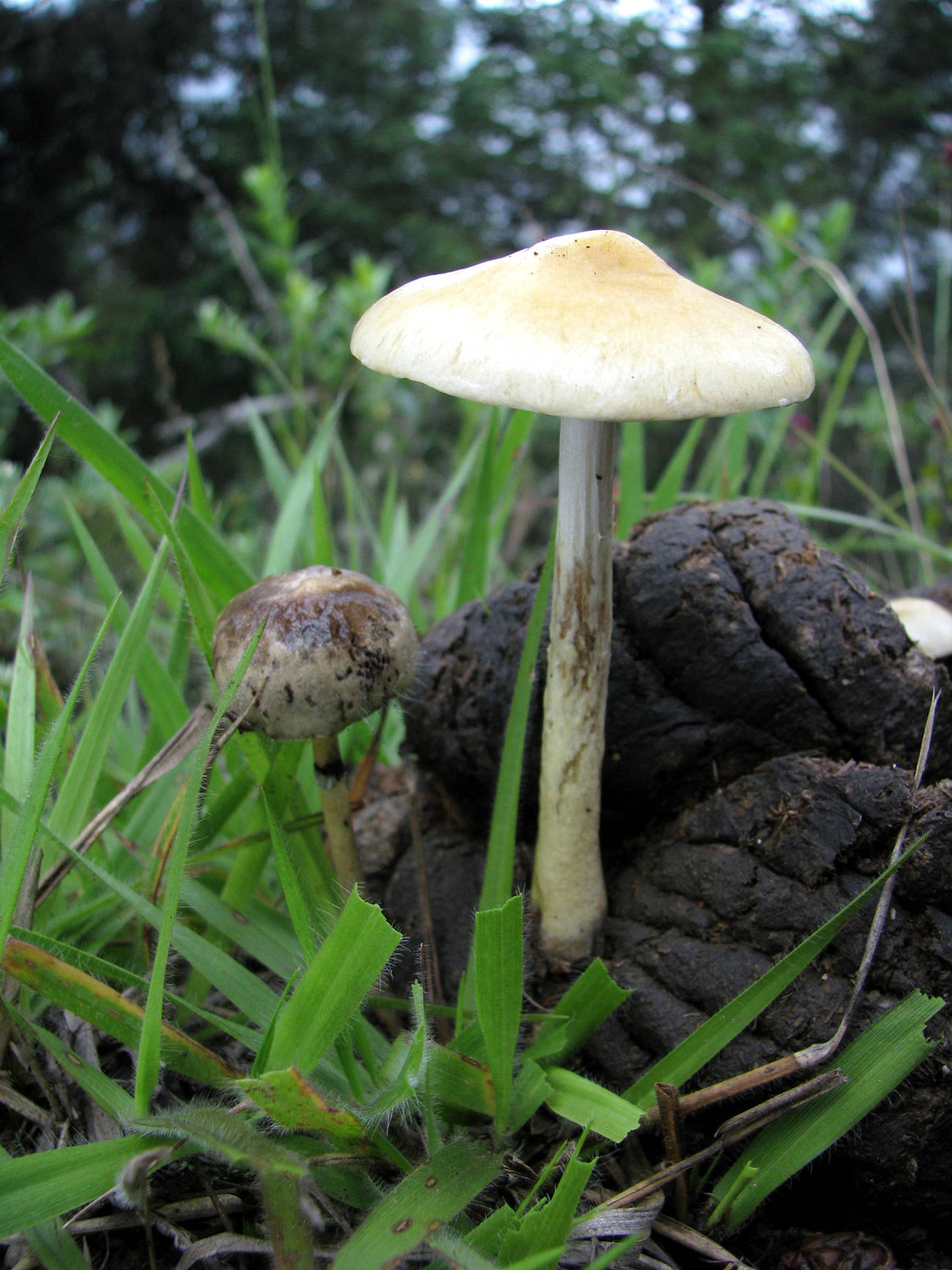
Local name: No local name known
Edibility: Inedible.
Habitat: Solitary to gregarious and terrestrial on animal dung and freshly manure grassland.
Description: Cap: 2-5 cm broad, hemispheric, expanding to convex, margin incurved then decurved, surface viscid when moist, glossy when dried, and pale-yellow. Hymenophore: Gills adnexed, sub-distant, relatively broad, cream coloured when young then greyish and then dark purple-brown in age, lameullae up to four series present. Stem: 5-10 cm tall and up to 5 mm thick, slender, stuffed or hollow, equal to slightly enlarged at the base and partial veil pallid, thin, membranous with a glutinous coating forming a narrow superior annulus flattened to the stem soon blackened from spores or leaving fragments on the cap margin. Flesh: Soft and watery-cream-yellow. Spore Print: Purplish brown.
Comments: Fruits of Stropharia semiglobata in manure-rich grass can be confused with Agrocybe pediades and Stropharia coronilla. Both species are similar cream-coloured and sub-viscid caps. Stropharia coronilla however differs in possessing a non-viscid and striate-margined annulus while Agrocybe pediadeslacks a ring and has brown and not purple-brown gills and spores. Compare with Bolbitius vitellinus which occasionally fruits on dung has a viscid, yellowish cap with a striate margin, ochre-coloured gills and lacks a veil.


